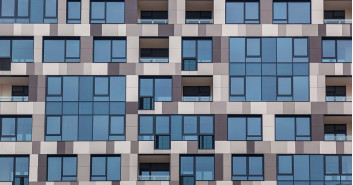Prefab Vs. Modular Construction
Modular vs. prefab? What's the difference? Prefabrication is a broad category, which seeks to maximize efficiencies.
With growing dissatisfaction over the increasing inefficiency of traditional, onsite construction, thoughtful owners are exploring offsite construction alternatives that allow for a more streamlined approach to the building process. During their exploration, many will come across terms such as prefabrication, modularization, or modular vs. prefab and wonder:
“What’s the difference between prefabrication and modularization?” and “Which option is better for my building project?”
Prefabrication
Prefabrication, or “Prefab” for short, is a broad category that refers to a construction process where some building elements are built offsite and when completed, shipped to a construction site for installation on that site.
Prefabricated buildings provide certain advantages compared to traditional onsite construction, including:
- Greater control over weather, quality, and supervision.
- Reduced environmental impact due to reduced waste, air, water, and noise pollution.
- Streamlined project schedules through fabricating building components while the construction site is being prepared.
- Fewer logistical challenges associated with organizing crews and deliveries.
- More convenient storage leading to minimal instances of lost or misplaced materials.
- Increased safety through limited exposure to unsafe weather and working conditions.
Prefabrication seeks to effect significant efficiencies in the construction process that should also result in a significant cost savings. A shorter project schedule, itself, further enhances cost savings. The shorter the construction period, the less construction period carrying costs, such as real estate taxes, insurance, interest and other construction period carrying costs typically referred to as “soft costs”, and the sooner the building can start generating revenue.
Not all prefabricated construction techniques are the same.
There are many subcategories of construction grouped together under the “Prefab” banner. Each refers to varying degrees of prefabricating or assembling building components at offsite locations, while site-work to accept those components is simultaneous underway. Two of the most common subcategories of prefabrication are panelization and modularization.
Panelization
Panelized is a construction method where the structural components of a building, such as walls, roofs and floor systems are constructed offsite in a factory and delivered to the job site to be incorporated into the building, and finished conventionally onsite. Generally the panels are structural, and have very little infrastructure or other components built into them.
The panels are generally “bare” meaning that they will include the structural members pre-built so that a wall or floor can come off a truck and be placed into the building. Once in place, these Panels need to be connected or fastened to other structural components in the field, and generally finished in a conventional way. Wall finishes, plumbing fixtures, electric and other infrastructure are usually not pre-installed, and need to be installed, connected and finished in the field. Panelized buildings therefore require a considerable amount of onsite work, but less work than if it were all stick-built in the field. This system works best for buildings that require wide open spaces and high ceilings.
Modularization
Modularization is a construction method where an entire unit of a building is constructed offsite, rather than smaller, structural components as with panelization. Modular units require the least amount of onsite construction time, as all plumbing, electrical, and even design finishes have typically already been installed in the facility. This leaves only the task of assembling the modular units together to form a completed building.
Modular buildings are very versatile and can be designed and built to serve virtually any function. They are particularly well suited, though, for buildings such as hotels, apartments, student housing, and any other types that typically consist of many repetitive units serving similar functions.
As modular buildings spend more time in offsite facilities during the modular construction process, the conditions are under even greater control for a larger portion of the entire process, which results in the greatest efficiency and quality of any of the prefabrication techniques for large-scale commercial construction.


